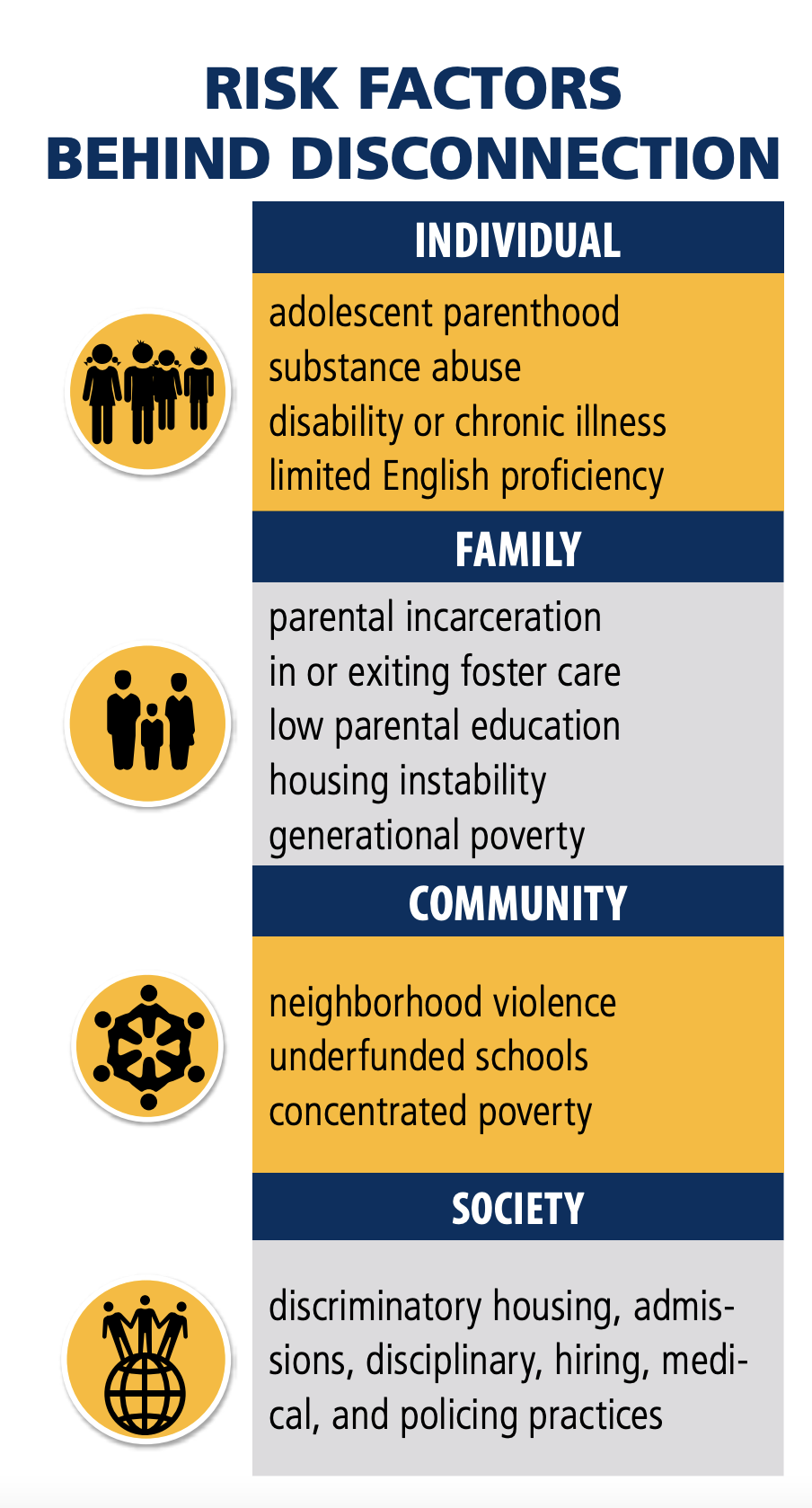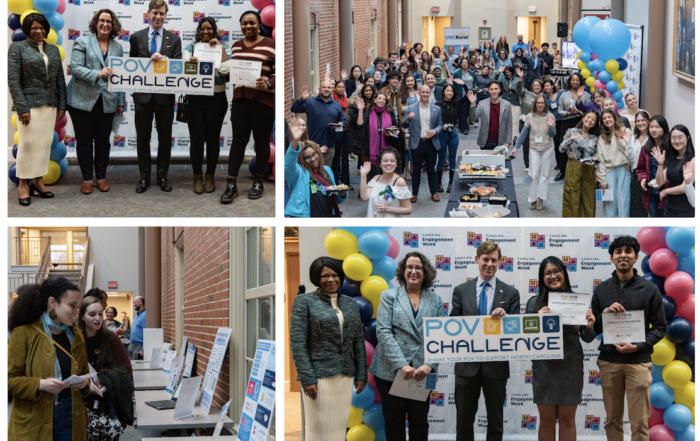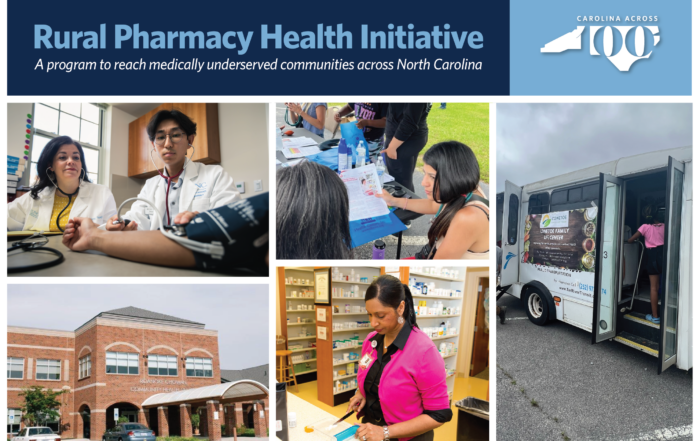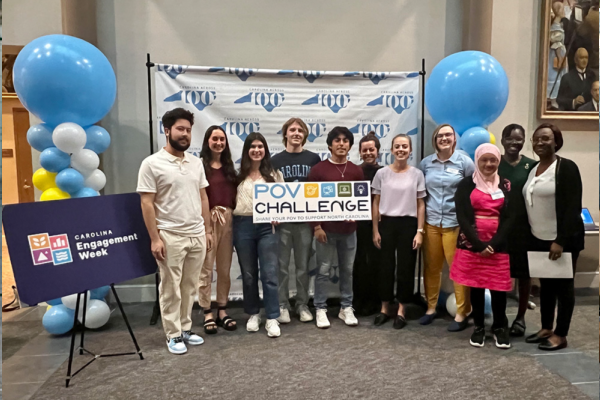Education | Employment | News
Helping young adults disproportionately hurt by the pandemic
Jess Dorrance and Abigail Holdsclaw, Carolina Across 100
June 8, 2022

The last couple of years have been record-breaking ones for the labor market. In March 2020, at the start of the pandemic, unemployment skyrocketed as businesses reduced their operations or closed entirely. It was the largest month-over-month increase in unemployment since the mid-1970s. Then, just one month later in April, the unemployment rate hit nearly 15 percent, the highest rate ever recorded. Fast forward two years to March 2022 and the employment picture looked completely different, with job openings reaching a record 11.5 million. Since then, data shows that job numbers have ticked down, but demand for workers is still extraordinarily high. In fact, many businesses continue to struggle to fill open positions, despite offering higher wages.
Like so many impacts from COVID-19, however, job losses and the subsequent recovery have not been experienced equally. For instance, the unemployment rate for young workers ages 16 to 24 increased more than any other age group during the height of the pandemic and has been slower to come back down.
At the same time, we also know that enrollment in post-secondary education during COVID has declined across all institution types. This is a different trend than what has been observed in previous economic downturns when, for example, post-secondary education enrollment increased during the Great Recession of 2008 as people sought ways to gain credentials while job opportunities lagged.
This current combination of higher unemployment and lower educational enrollment among young adults is worrisome. Not just for young people themselves, but for all of us. Research indicates lasting impacts of this type of disconnection from school and/or work, including lower incomes, less wealth, poorer health outcomes, and increased risk for criminal justice involvement along with higher reliance on public support programs such as Medicaid and Supplement Nutrition Assistance Program (SNAP).
Sixteen to 24-year-olds who are not in school and not in the workforce are commonly known as Opportunity Youth. They are the focus of Carolina Across 100’s first program called “Our State, Our Work: Connecting Young Adults to Their Future.” At a time when support for these young people is desperately needed, Carolina Across 100 invited communities from across the state to collaborate, and unsurprisingly, our communities enthusiastically answered the call.
On June 1st, we announced the 13 cross-sector community teams, representing 37 counties, that will participate in Carolina Across 100’s “Our State, Our Work” program. Click here to learn more about them.
Bringing them back starts with knowing the barriers and priorities
The pandemic has both encouraged change and shone a light on things that have been unchanged for too long. The call to support Opportunity Youth is urgent now because of the heavy toll that COVID has taken on young adults, but many of the paths to disengagement are not new.
We know that some factors make individuals more vulnerable to becoming disconnected from education and the workforce. The figure below from the American Public Health Association highlights a few of those. They include young parents, those who have encounters with the justice system, those living in areas of concentrated poverty, and those who face discrimination across a number of dimensions.

Additional barriers, such as lack of transportation and/or lack of childcare, can continue to make it hard for young people to re-engage, even when opportunities are available. It is also important to consider how the pandemic may have added to or change the priority for addressing these types of issues.
A report included in a series by the Federal Reserve Bank of Dallas highlighted lessons learned during the pandemic from local Opportunity Youth initiatives in Texas. One of their findings points to a new priority of addressing mental health challenges for Opportunity Youth. A related lesson was the need for organizations that serve Opportunity Youth to shift into addressing crisis issues rather than focusing on larger, systemic challenges and longer-term planning for re-engagement.
Supporting communities in their efforts to support Opportunity Youth
The “Our State, Our Work” program will bring the University’s diverse resources to bear to support and enhance the work communities are doing to address these barriers and re-engage their Opportunity Youth. We will draw on lessons already learned within our communities and from around the country and share our lessons learned with others.
The partnership with communities will provide multiple types of support from a broad range of campus experts and facilitate connections across the state and beyond. Much of this will happen through a series of in-person learning forums, where, in addition to learning from campus, statewide, and national experts, communities will also share their own expertise, challenges, and best practices with one another.
The supports provided to communities are organized into three main categories: programmatic supports, direct resources, and information and data to facilitate increased understanding of the issue and potential solutions.
- Programmatic support will include site visits, evidence-based programming, and program management, including funding to support local program managers in each community.
- Direct resources will include assistance with marketing of existing community programs, a community toolkit, fundraising support, and micro-credential training from industry leaders such as Google and Microsoft.
- Resources meant to increase community understanding will include data and analytics support, story-telling centering Opportunity Youth to learn more about how programming could best serve them in their communities, and information and trainings provided through the learning forums.
Centering Communities
While the “Our State, Our Work” program will offer this comprehensive set of supports, each community will lead the way in identifying which supports best leverage their unique assets and address their unique challenges. The needs, desires, and knowledge of communities will guide which combination of resources communities choose to take advantage of.
Prioritizing Sustainability
This initiative is not in the business of quick fixes or silver bullets. Opportunity Youth are diverse. So are the challenges that lead to disconnection and the barriers to re-engagement. The program will not waste any time getting to work with our communities and the work will be built to last. We will prioritize creating sustainable programming that communities can maintain and grow on their own so that long after the Carolina Across 100 collaboration has ended, communities remain more resilient and better positioned to allow the next generation of young workers to thrive.
Stay tuned to see how the work unfolds and what we learn along the way
There are several ways to stay connected:
- Check back at the “Our State, Our Work” page for regular updates
- Sign up for email alerts here to get project updates and research findings
- Search #CarolinaAcross100 on Facebook, Twitter, Instagram, and LinkedIn to see the latest posts






